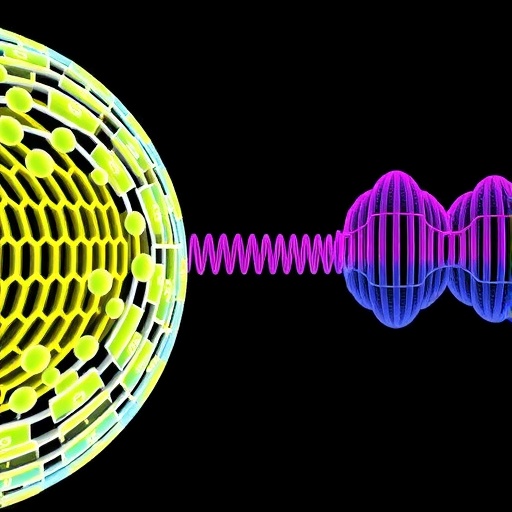In the increasingly complex landscape of biomedicine and education, a novel initiative emerges that intricately blends rigorous scientific theory with practical application: the Hodgkin-Huxley Project. This two-part educational approach, spearheaded by researchers Sean Higbee, S. Miller, and K. Alfrey, seeks to address the nuanced behaviors of ion channels through both deterministic and stochastic models. As students delve into this project, they are confronted with the challenges and intricacies of modeling biological systems, an engagement that promises not only to enlighten but also to inspire a new generation of biomedical engineers.
Ion channels are critical components of cellular membrane physiology, playing pivotal roles in various physiological processes, including neuronal signaling and muscle contraction. The Hodgkin-Huxley model, a seminal achievement in the realm of biophysics and neurobiology, established a mathematical framework to describe how action potentials in neurons are initiated and propagated. However, as scientific inquiry advances, so too does our understanding of the stochastic nature of these channels, prompting the need for sophisticated modeling that encapsulates both certainty and unpredictability.
The first phase of the project emphasizes deterministic models, wherein students construct mathematical equations to predict ion channel behavior under controlled conditions. By manipulating parameters such as voltage and ion concentration, learners experience firsthand the profound implications of electrical conductance and gating kinetics. This phase lays the groundwork for foundational understanding, as students grapple with the mathematical intricacies that govern ionic currents and membrane potentials.
Once students have internalized the deterministic framework, the project transitions to explore the stochastic aspects of ion channel behavior. Biological systems are inherently complex, often exhibiting variability that cannot be fully explained by deterministic models alone. Here, students engage with simulations that encapsulate randomness, allowing them to observe how ion channels operate in real-world scenarios where noise and ambiguity are ever-present. This dual approach provides a comprehensive understanding of ion channels, equipping students with the skills to approach real-life biological challenges empathetically and innovatively.
In executing this project, educators are not only imparting knowledge but also fostering critical thinking and problem-solving skills. Students are encouraged to question established norms and think beyond traditional paradigms, thereby cultivating a culture of curiosity and innovation within the classroom. As the educational landscape shifts to accommodate advancements in technology and scientific understanding, projects like the Hodgkin-Huxley initiative exemplify the need for adaptable curricula that resonate with contemporary challenges.
Furthermore, this project serves to bridge the gap between theoretical knowledge and practical application. By engaging in hands-on experimentation and simulation, students can visualize complex concepts, transforming abstract notions into tangible understanding. This experiential aspect of learning is vital in a field as dynamic and evolving as biomedical engineering, where the ability to apply knowledge in practical contexts can significantly impact future career trajectories.
As educators move forward with this two-part approach, they are positioned uniquely to enhance student engagement and comprehension. By highlighting the importance of both deterministic and stochastic models, the Hodgkin-Huxley Project underscores the dynamic nature of biological systems, preparing students for the complexities they will encounter in their professional lives. In an age where interdisciplinary integration is crucial, the project exemplifies how melding traditional scientific principles with innovative pedagogical strategies can yield remarkable educational outcomes.
As the discourse surrounding the Hodgkin-Huxley Project continues to unfold, its implications extend beyond the classroom. Such initiatives not only equip students with essential skills but also contribute to the broader scientific community by fostering a new generation of thinkers equipped to tackle pressing biomedical challenges. By transforming the way ion channels are understood and modeled, Higbee, Miller, and Alfrey champion the essential evolution of education in the biomedical engineering field.
The avenues opened by this research reflect a profound commitment to academic excellence and transformative education. By challenging students to confront the realities of biological modeling through both deterministic and stochastic lenses, the Hodgkin-Huxley Project exemplifies how education can prepare individuals for the future landscape of biomedicine. In this era of rapid advancement, it is imperative that educational methodologies evolve concurrently, ensuring that students are not only knowledgeable but also adept at navigating the complexities of their chosen fields.
As the project progresses, ongoing assessments will likely contribute valuable insights into the efficacy of such pedagogical approaches, potentially influencing future curricula across institutions. The potential for broader interdisciplinary collaboration is immense, with implications for not only educational methodologies but also research applications that rely on a nuanced understanding of ion channel behavior.
In conclusion, the Hodgkin-Huxley Project’s innovative approach represents a significant stride toward enhancing biomedical education by intertwining theory with practice. As students embark on this journey of discovery and engagement, the ripple effects of their learning promise to resonate in both academic and professional realms, heralding a new age of inquiry.
Subject of Research: Ion Channel Behavior in Biomedical Education
Article Title: A Two-part Approach to the Hodgkin-Huxley Project: Challenging Students to Build Deterministic and Stochastic Models of Ion Channel Behavior
Article References:
Higbee, S., Miller, S. & Alfrey, K. A Two-part Approach to the Hodgkin-Huxley Project: Challenging Students to Build Deterministic and Stochastic Models of Ion Channel Behavior.
Biomed Eng Education (2025). https://doi.org/10.1007/s43683-025-00178-6
Image Credits: AI Generated
DOI:
Keywords: Ion channels, Hodgkin-Huxley model, deterministic models, stochastic models, biomedical education, critical thinking, problem-solving skills.




